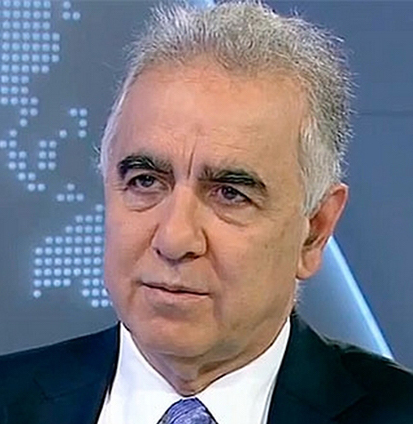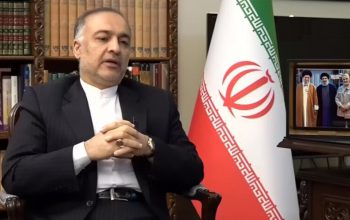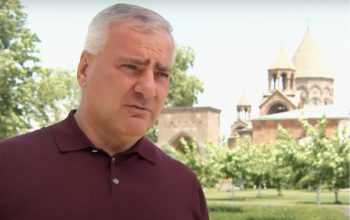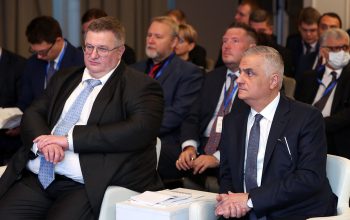By Harut Sassounian
TheCaliforniaCourier.com
Ever since Prime Minister Nikol Pashinyan’s disgraceful attempt to raise unnecessary questions about the facts of the Armenian Genocide to a group of Swiss-Armenians in Zurich last month, he and his blind followers have been making excuses for his deplorable remarks.
Pashinyan casually told the Swiss-Armenian group: “We need to also return to the history of the Armenian Genocide. We need to understand what happened and why?” It is shocking that 110 years after the Armenian Genocide, the Prime Minister of Armenia pretends not to know “what happened and why.” I don’t think it is because of his lack of knowledge. He knows exactly what he is saying and why.
He continued with more fabricated questions: “How is it that in 1939 there was no agenda for the Armenian Genocide? And how is it that in 1950 the Armenian Genocide agenda appeared? And how did we perceive it, through whom did we perceive it?” Pashinyan must be told that long before 1950 and 1939, all the way back in 1921, the Catholicos of All Armenians Kevork V Surenyants designated April 24 as the Day of Remembrance for the victims of ‘Meds Yeghern.”
Pashinyan has made similar questionable statements in the past. To confuse the public, he regularly denies his earlier statements and claims that he was misunderstood. One thing is sure, Azeris and Turks were elated that the Prime Minister of Armenia agrees with them on “questioning the genocide.”
Justifiably, Pashinyan was condemned by prominent Armenians and organizations all over the world. He was harshly criticized by Catholicoi Karekin II and Aram I, various historians and experts on the Armenian Genocide, the Lemkin Institute, and Armenian organizations in Switzerland, Belgium and Armenia.
Given the fact that Pashinyan has denigrated all sacred symbols of the Armenian nation from Mt. Ararat to Armenia’s coat of arms, and has repeatedly claimed that commemorations of the Armenian Genocide were prompted by external forces, meaning the Soviet Union, he has come very close to denying the facts of the Armenian Genocide which is a crime in Armenia punishable by 2-5 years of imprisonment.
Pashinyan’s statement, as to why the Armenian Genocide was not on the agenda in 1939 and that it appeared on the agenda only in 1950, has a very simple explanation. There is no need for conspiracy theories. After the demise of Stalin’s dictatorial regime, which punished manifestations of nationalism with imprisonment, exile and even execution, the repressive environment began to soften gradually which allowed the construction of the Sardarabad and Armenian Genocide Memorials in Soviet Armenia.
In the meantime, both prior to 1939 and after 1950, Armenians in the Diaspora commemorated the Armenian Genocide, asking for its recognition and the return of occupied Western Armenia from Turkey. Memoranda and petitions were presented to the United Nations and major powers in the late 1940’s. Tens of thousands of Armenians marched in various Middle Eastern, European and American cities demanding their historical rights.
On August 20, 2009, Pashinyan wrote in his “Prison Diary: the mechanics of genocide” and reposted on his Facebook page last week: “Traditional Armenian thinking equates the concept of ‘genocide’ with the hostile actions of the outside world, ‘the Turk,’ meaning, the enemy. The new Armenian thinking tries to perceive the phenomenon through self-realization, tries to perceive the internal causes of the phenomenon, which are hidden behind the genocided people’s thinking, meaning, our own thinking.” Strangely, Pashinyan shifts the blame for the genocide from the perpetrators to the victims.
There are two key documents that I would like to bring to Pashinyan’s attention:
1) The law adopted by the Supreme Council of the Armenian Soviet Socialist Republic on Nov. 22, 1988: We “condemn the 1915 Genocide of the Armenians in Ottoman Turkey as a grave crime against humanity, and declare April 24 as a day of remembrance for the Armenian victims.”2) Article 136 of the Criminal Code of the Republic of Armenia: “Public denial, justification, propaganda or belittling the danger of Genocide or Crimes against Humanity:a) Public denial, justification, propaganda or belittling the danger of Genocide or Crimes against Humanity, where those have been committed on the basis of racial background, skin color, national or ethnic origin or religious background, for the purpose of provoking hatred, discrimination or violence against a person or a group of persons — shall be punished by a fine in the amount of twenty-fold to forty-fold, or public works for a term of one hundred fifty hours to two hundred fifty hours, or by restriction of liberty for a maximum term of three years, or by short-term imprisonment for a term of one to two months, or by imprisonment for a maximum term of four years.b) The act provided for in part (a) of this Article, which has been committed:i) through publicly exhibited artworks, mass media or using information or communication technologies;ii) by use of official or service authority or influence conditioned thereby — shall be punished by imprisonment for a term of two to five years.
Regrettably, Pashinyan’s statements parallel the denialist strategy of the Turkish government. Turks raise similar questions to cast doubt on the veracity of the Armenian Genocide.
Because Armenia’s judicial system is currently under Pashinyan’s control, no judge will dare to find him guilty. But when he is no longer in power, an independent judge will punish him for violating the law on genocide denial.




